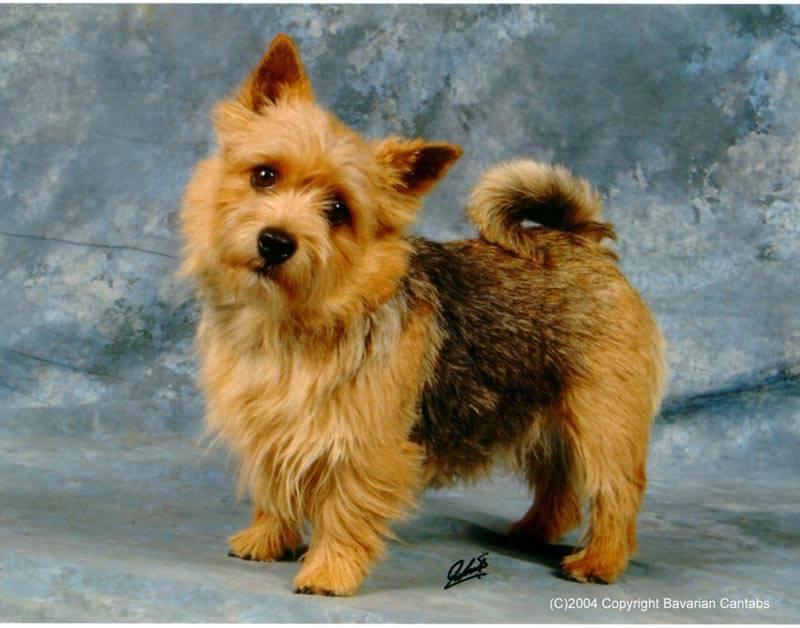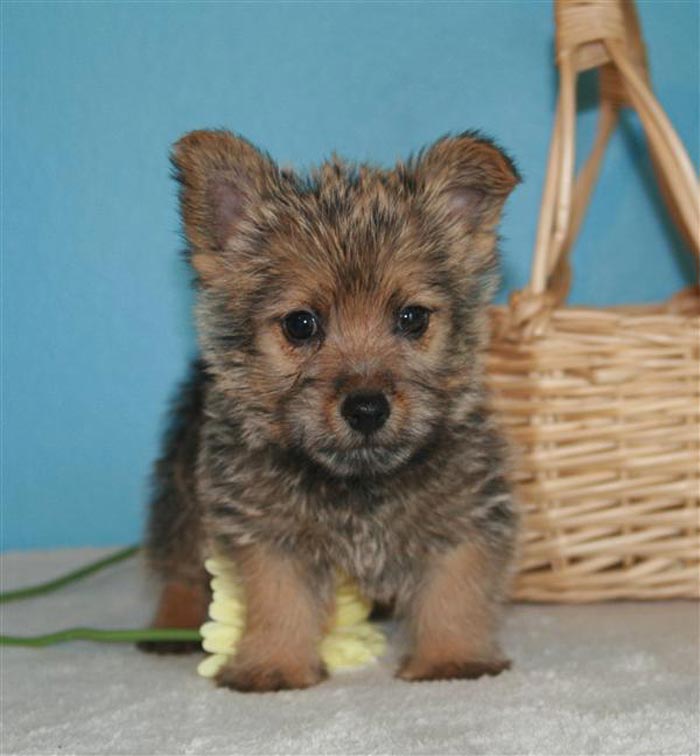The American Staffordshire terrier is a breed of medium-sized, short-coated dog whose early ancestors came from England. In the early part of the twentieth century, the breed gained respectability, and it was accepted by the American Kennel Club as Staffordshire Terrier.
Origins
Although the early ancestors of this breed came from England, the development of the American Staffordshire Terrier is the story of a truly American breed. This type of dog was instrumental in the success of farmers and settlers who developed this country. They were used for general farm work, guarding the homestead, and general companionship.
A number of the early ancestors were also developed for the "sport" of dog fighting. The extraordinary vitality of this breed is a direct result of breeding for successful fighting dogs.
Until the early part of the 19th century the Bulldog was bred with great care in England for the purpose of baiting bulls. Pictures from as late as 1870 represent the Bulldog of that day more like the present-day American Staffordshire Terrier than like the present-day Bulldog. Some writers contend it was the White English Terrier, or the Black and Tan Terrier, that was used as a cross with the Bulldog to perfect the Staffordshire Terrier. It seems easier to believe that any game terrier, such as the Fox Terrier of the early 1800s, was used in this cross, since some of the foremost authorities on dogs of that time state that the Black-and-Tan and the white English Terrier were none too game, but these same authorities go on to stress the gameness of the Fox Terrier. In analyzing the three above-mentioned terriers at that time, we find that there was not a great deal of difference in body conformation, the greatest differences being in color, aggressiveness, and spirit. In any event, it was the cross between the Bulldog and the terrier that resulted in the Staffordshire Terrier, which was originally called the Bull-and-Terrier Dog, Half and Half, and at times Pit Dog or Pit Bullterrier. Later, it assumed the name of Staffordshire Bull Terrier in England. These dogs began to find their way into America as early as 1870 where they became known as Pit Dog, Pit Bull Terrier, later American Bull Terrier, and still later as Yankee Terrier.
Although the early ancestors of this breed came from England, the development of the American Staffordshire Terrier is the story of a truly American breed. This type of dog was instrumental in the success of farmers and settlers who developed this country. They were used for general farm work, guarding the homestead, and general companionship.
A number of the early ancestors were also developed for the "sport" of dog fighting. The extraordinary vitality of this breed is a direct result of breeding for successful fighting dogs.
Until the early part of the 19th century the Bulldog was bred with great care in England for the purpose of baiting bulls. Pictures from as late as 1870 represent the Bulldog of that day more like the present-day American Staffordshire Terrier than like the present-day Bulldog. Some writers contend it was the White English Terrier, or the Black and Tan Terrier, that was used as a cross with the Bulldog to perfect the Staffordshire Terrier. It seems easier to believe that any game terrier, such as the Fox Terrier of the early 1800s, was used in this cross, since some of the foremost authorities on dogs of that time state that the Black-and-Tan and the white English Terrier were none too game, but these same authorities go on to stress the gameness of the Fox Terrier. In analyzing the three above-mentioned terriers at that time, we find that there was not a great deal of difference in body conformation, the greatest differences being in color, aggressiveness, and spirit. In any event, it was the cross between the Bulldog and the terrier that resulted in the Staffordshire Terrier, which was originally called the Bull-and-Terrier Dog, Half and Half, and at times Pit Dog or Pit Bullterrier. Later, it assumed the name of Staffordshire Bull Terrier in England. These dogs began to find their way into America as early as 1870 where they became known as Pit Dog, Pit Bull Terrier, later American Bull Terrier, and still later as Yankee Terrier.
Popularity
American Staffordshire terriers reached a peak of popularity in the first half of the 20th century; “Pete the Pup” appeared in the Our Gang comedies, and the breed personified the all-American pet and soon spread all over the country.
In 1936, they were accepted for registration in the AKC Stud Book as Staffordshire Terriers. They belong to the terrier and molosser groups. The name of the breed was revised effective January 1, 1972 to American Staffordshire Terrier. Breeders in this country had developed a type which is heavier in weight than the Staffordshire Bull Terrier of England and the name change was to distinguish them as separate breeds.
Although ancestors of the American Staffordshire were fighting dogs, the selective breeding since the 1930s has been away from the fighting heritage. The American Staffordshire Terrier of today is a companion and show dog, rather than a gladiator. Although more rarely used on the farm now, the talents that made him a good all purpose dog are still to be found in the breed. Often called Amstaffs by breed enthusiasts, the dogs' popularity began to decline in the United States following World War II in favor of other breeds. Today the breed is ranked 66 among 155 dog breeds in the USA.
Temperament
The American Temperament Test Society conducts tests every year on thousands of dogs to determine the soundness of their temperament. The American Staffordshire Terrier routinely ranks well above many "popular" breeds such as the Beagle, Collie, Doberman Pinscher and the Cocker Spaniel. This is a very intelligent, human-oriented, active dog and an affectionate family pet. Over the past 50 years, careful breeding has produced this friendly, trustworthy dog. One of the characteristics that most owners and breeders talked and look for particular in this breed is gameness. Gameness refers to perseverance, spirited, readiness of a dog to accomplish a given task.
Health and well-being
Amstaff pups should not be brought home before they are 8–10 weeks old. Their life expectancy is generally 12 to 16 years with good care. It is a healthy breed with relatively few major problems. Notable issues related to health and wellbeing include:
Inherited disorders
- Amstaffs may suffer from Congenital Heart Disease (OFA rank:11, Percent Abnormal 1.6%, Percent Normal 95.1% )
- Amstaffs are somewhat prone to Canine hip dysplasia, though not as much as some other breeds. Hip scores are recommended before breeding. (OFA rank:21, Percent Abnormal 26.0%, Percent Normal 71.7% )
- Elbow dysplasia (OFA rank:12, Percent Abnormal 17.8%, Percent Normal 81.4%)
- There are some risk of knee problems. A luxating patella is a common occurrence in the knee where the leg is often bow shaped. (OFA rank:72, Percent Abnormal 1.3%, Percent Normal 98.7%)
- Thyroid Dysfunction (OFA rank:19, Percent Abnormal 8.0%, Percent Normal 80.0%)
- There is a small incidence of other conditions, such as senior ataxia and hereditary cataracts.
Other disorders
- Amstaffs are sometimes prone to skin allergies, UTI, and Autoimmune diseases. Spondylosis and Osteoarthritis are common place in older dogs.
Breed-specific legislation
The American Staffordshire Terrier is often subject to breed bans worldwide that target the Bull and Terrier family in response to a number of well-publicized incidents involving pit bull-type dogs or other dog breeds. This legislation ranges from outright bans on the possession of these dogs to restrictions and conditions on ownership. However, the appropriateness and effectiveness of breed-specific legislation in preventing dog bite fatalities and injuries is disputed. Most animal-related organizations also oppose breed-specific legislation:
- The American Veterinary Medical Association supports dangerous animal legislation by state, county, or municipal governments provided that legislation does not refer to specific breeds or classes of animals.
- Canadian Veterinary Medical Association supports dangerous dog legislation provided that it does not refer to specific breeds.
- The Centers for Disease Control said that breed-specific approaches to the control of dog bites do not address the issue that many breeds are involved in the problem and that most of the factors contributing to dog bites are related to the level of responsibility exercised by dog owners. Furthermore, tethered dogs are more likely to bite than untethered dogs.
- Journal of the American Veterinary Medical Association states that because of difficulties inherent in determining a dog’s breed with certainty, enforcement of breed-specific ordinances raises constitutional and practical issues.
- SPCA recognizes that dog bites are a serious public safety problem. Their interest in this issue relates directly to the goal of creating humane communities where people and animals enrich each other’s lives. However, the BC SPCA opposes breed banning as a strategy for achieving this goal. Breed banning is a simplistic and ineffective solution to a multi-faceted problem.
Famous American Staffordshire Terriers
- Pete the Pup in several Our Gang films (later known as The Little Rascals) during the 1920s and 1930s.
- 'Jake', a dog, featured in an "easter egg"; hidden in DVD format for the horror film Cabin Fever.
- Sergeant Stubby died on March 16, 1926, as a hero. Sergeant Stubby is the most decorated dog in military history, and the only dog to have been promoted during battle. He fought for 18 months in the trenches for France during WW1 for 17 battles. Stubby warned his fellow soldiers of gas attacks, located wounded soldiers in No Man's Land, and listened for oncoming artillery rounds. He was also responsible for the capture of a German spy at Argonne. After his time in the war, Stubby met Woodrow Wilson, Calvin Coolidge, and Warren G. Harding. He was awarded life memberships to the American Legion, the Red Cross, and the YMCA.
- Jack Brutus was another famous military dog. He was the official mascot of Company K, First Connecticut Volunteer Infantry.
- “Bud” was the first dog to take a cross-country drive in 1903 with his owner Horatio Nelson Jackson and a bicycle mechanic named Sewall Crocker. “Bud soon became an enthusiast for motoring," Jackson bragged, especially after his masters put a pair of their goggles on him to keep the stinging, alkali dust out of his eyes.
- Poster image for the U.S. during the 1900s. This breed was the image people saw on various war posters, representing the country's strength and dignity.
Is the only dog to have ever graced the cover of Life Magazine three times.
Books
- The American Staffordshire Terrier by Clifford & Alberta Ormsby, 1956
- American Staffordshire Terrier by Joseph Janish, 2003, 155 pages; ISBN1593782489
- American Staffordshire Terrier Champions, 1988-1995 by Jan Linzy, 1998, 84 pages; ISBN 155893054X
- American Staffordshire Terrier Champions, 1996-2001 by Jan Linzy, 2002, 84 pages; ISBN 1558931023
- Staffordshire Terriers: American Staffordshire Terrier and Staffordshire Bull Terrier by Anna Katherine Nicholas, 1991, 256 pages; ISBN 0866226370
- The American Staffordshire Terrier: Gamester and Guardian by Sarah Foster, 1998, 139 pages; ISBN 0876050038












